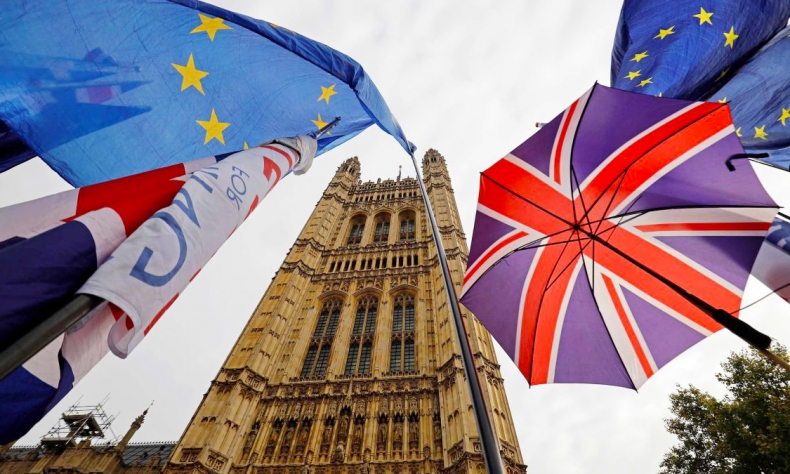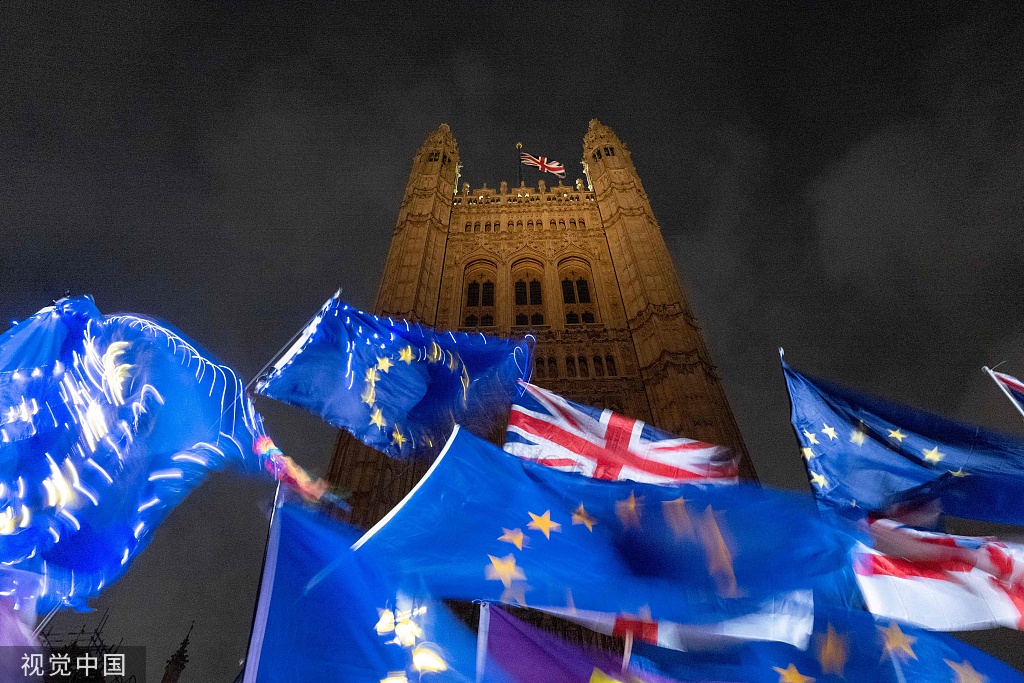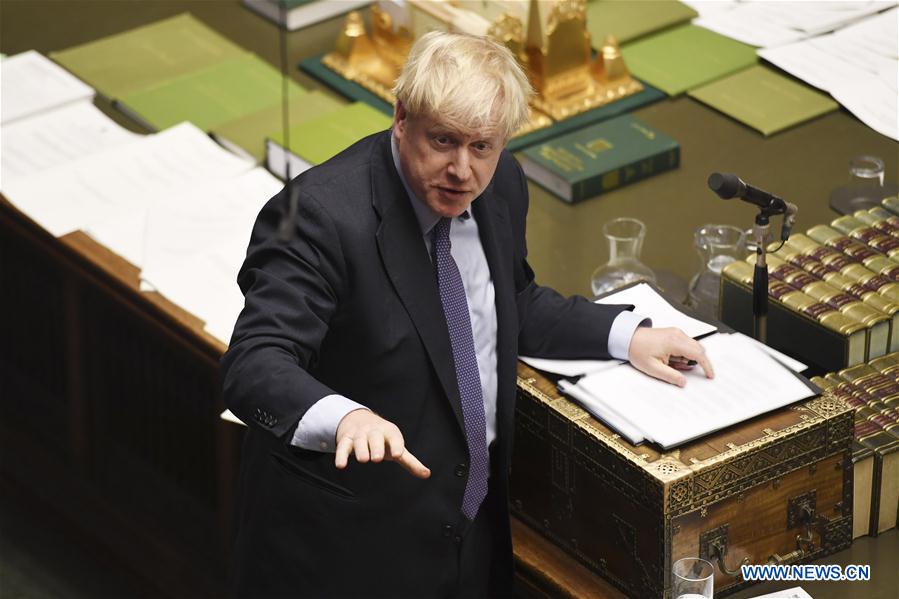
No End in Sight for the Bitter Brexit Saga
Boris Johnson had already declared he would “rather be dead in a ditch” than delay Brexit any longer. But what will happen next?
The saga of Brexit continues with all the mystery, treachery and longevity of an old Norse saga of voyages, feuds and battles.
At the end of August, British Prime Minister Boris Johnson secured the agreement of the monarch to shut down (“prorogue”) parliament in Westminster for five weeks.
While a suspension for three weeks over the party conference season, plus another week to prepare for a new parliamentary session, would not have been abnormal, these are not normal times in British political life.
The Johnson government’s intention was clear: to cut down the time available to MPs to debate the terms of any new arrangement for leaving the European Union by the latest deadline — October 31 — agreed with the EU.
But then, assisted by Speaker John Bercow, the majority of MPs took control of the House of Commons agenda on September 4 and passed a bill preventing a “no deal exit.”
By ejecting 21 of its own pro-EU MPs who had enabled this bill, the Conservative Party worsened Johnson’s position in the Commons. Even with the support of Northern Ireland unionist MPs, he found himself almost two dozen votes short of a majority.

The new law also compelled the Prime Minister to write a letter to the EU requesting an extension of the October 31 deadline if parliament had not agreed a new withdrawal deal by October 19. He had already declared he would “rather be dead in a ditch” than delay Brexit any longer.
Then a gaggle of wealthy anti-Brexit litigants backed by former Tory Prime Minister John Major succeeded in having the prorogation ruled unlawful by the Supreme Court on September 24.
The Commons duly reconvened the following day but did nothing to resolve the Brexit crisis before parliament closed and then reopened on October 14.
Next, to almost everyone’s surprise, Johnson returned from Brussels with a revised withdrawal deal on October 17. True, it bore an uncanny resemblance to the previous agreement drawn up under his predecessor Theresa May that had been rejected three times by the majority of MPs (and twice by Johnson himself).
As before, the new agreement meant Britain remaining in the EU Single Market for most non-agricultural goods and many services until the end of a transition period in December 2020, still subject to EU rules requiring the free movement of commodities and capital and no substantive State aid to industry. As before, Britain would pay a divorce settlement to the EU of some £36 billion ($44 billion).
The main change was that the so-called “backstop” would disappear, thus no longer locking the whole of the U.K. into the EU Single Market and a common customs area after the transition period, should no permanent arrangement be made to continue the free movement of goods across the north-south border in Ireland.
Instead, Northern Ireland alone would, in effect, remain in the EU Single Market and customs union alongside — and commercially united with — the Irish Republic. A post-Brexit customs border would be drawn down the Irish Sea between Ireland as a whole and Britain (England, Scotland and Wales).
This totally alienated the Northern Ireland unionists, who finally realized how the logic of Brexit drives the two parts of Ireland closer together, whereas they only want to remain firmly in the union with Britain within the U.K.
In an extraordinary Saturday sitting of the Westminster parliament on October 19, the Prime Minister presented his new Withdrawal Agreement with the EU for approval. However, the majority of MPs voted instead to wait until a bill embodying the deal gained passage through both the Commons and the upper House of Lords.
This would provide opportunities to attach conditions to the bill. For example, many Labor and other opposition MPs want any final Brexit deal to go to a second referendum, where they hope voters will reject it.
Obliged by his defeat on October 19, Boris Johnson sent the prescribed letter to the EU requesting an extension to the U.K.’s membership. However, he sent it unsigned, accompanied by a signed letter of his own setting out the reasons why no such extension should be granted.

Sensing that a large section of British public opinion is tired of the Brexit issue, wants the matter settled and is turning against politicians who break their promises to honor the 2016 referendum result, a clear majority of MPs voted to support Johnson’s new Withdrawal Bill in principle on October 22. However, they then rejected a restrictive timetable allowing only three days to get the bill through the House of Commons to meet the October 31.
What will happen next? The Bill is in limbo-land. The EU heads of government may well offer an extension for a few days (the French preference) or up to three months (the German) to see if MPs approve it with or without attaching a second referendum. Or the minority Tory government might engineer its own downfall in an effort to precipitate a General Election.
The Prime Minister has repeatedly challenged the opposition parties to go to an election if they won’t approve Brexit by the end of this month. Labor, in particular, has so far declined this poisoned chalice, fearing that many working-class Brexit supporters will defect to the Brexit Party or — less likely — to the Tories or, as in this May’s European elections, will not vote at all.
Boris Johnson will, of course, portray Labor as an unequivocally pro-EU, anti-Brexit party that does not respect referendum results nor its own pledges to honor them. That will not worry those in the Labor leadership who regard sabotaging Brexit as more important than forming a government led by Jeremy Corbyn.
His best chance of winning would be if the election is fought on domestic questions, where Labor has some bold and popular answers, rather than on Brexit.
The other option is for Labor, the Scottish National Party, the Liberal Democrats and ex-Tories to form a self-styled “Government of National Unity” to halt Brexit and hold a second referendum.
“National unity” would be the least likely outcome in what is a deepening political and constitutional crisis for the ruling class in Britain.
Robert Griffiths is a former Senior Lecturer in Political Economy and History at the University of Wales and currently the General Secretary of the Communist Party of Britain.
Opinion articles reflect the views of their authors only, not necessarily those of China Focus
If you would like to contribute, please contact us at chinafocus@cnfocus.com
 Facebook
Facebook
 Twitter
Twitter
 Linkedin
Linkedin
 Google +
Google +










